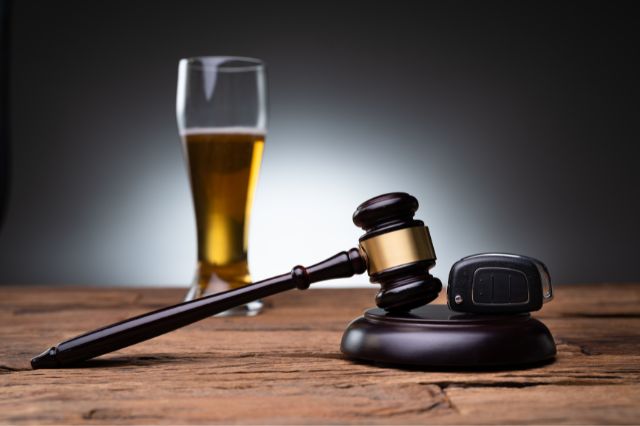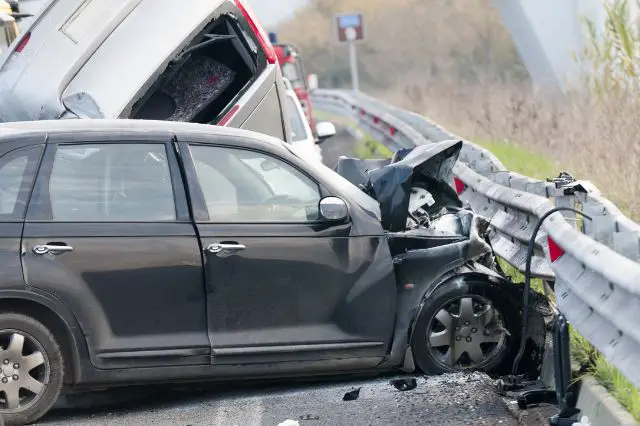Law
Wrongful Death Claims: Factors Considered Determining Liability and Damages

Wrongful death claims can be incredibly challenging to navigate, especially for those who have recently lost a loved one. These claims are civil lawsuits that aim to hold the responsible party accountable for their actions, which resulted in the death of another person. Wrongful death claims can arise from a variety of situations, including medical malpractice, car accidents, and workplace accidents.
The process of filing a wrongful death claim can be complicated, and it is essential to have a clear understanding and reach out to lawyers with decades of experience. Each state has its own wrongful death statute, which sets out the specific rules and procedures for filing a claim. Additionally, it is crucial to work with an experienced wrongful death attorney who can guide you through the process and ensure that your rights are protected.
If you are considering filing a wrongful death claim, it is essential to gather as much information as possible about the process and your legal options. This article will provide an overview of wrongful death claims, including what they are, how they work, and what you need to know before filing a claim. With this information, you can make an informed decision about whether a wrongful death claim is the right choice for you and your family.
Understanding Wrongful Death Claims
Wrongful death claims are legal actions that are filed by the family members or loved ones of a person who has died due to the fault or negligence of another person or entity. In such cases, the wrongful death claim is brought against the responsible party, seeking compensation for the damages incurred due to the death of the victim.
A wrongful death claim can be filed for a variety of reasons, such as medical malpractice, car accidents, workplace accidents, or any other situation where someone’s wrongful act, intentional or unintentional, has caused the death of another person. In order to file a wrongful death claim, the plaintiff must prove that the defendant’s wrongful act or negligence was the direct cause of the victim’s death.
Who Can File a Wrongful Death Claim
When a loved one dies due to someone else’s negligence or intentional act, certain individuals may have the right to file a claim with the help of a wrongful death law firm. The specific laws governing who can file a claim vary from state to state, but generally, the following parties may be eligible:
- Immediate family members: In most states, the surviving spouse and children of the deceased have the first right to file a wrongful death claim. If there is no spouse or children, the right may pass to other immediate family members, such as parents or siblings.
- Surviving spouse: If the deceased was married, the surviving spouse may have the right to file a wrongful death claim, even if there are children or other family members.
- Children: If the deceased had children, they may have the right to file a wrongful death claim, either individually or as a group.
- Parents: In some states, parents may have the right to file a wrongful death claim if their child was unmarried and had no children.
- Other relatives: Depending on the state, other relatives, such as grandparents or cousins, may be able to file a wrongful death claim if there are no immediate family members.
The Legal Process of a Wrongful Death Claim
The legal process of a wrongful death claim involves several steps. The plaintiff, who is usually a surviving family member, must prove that the defendant’s negligence or intentional act caused the death of their loved one. The burden of proof is on the plaintiff, and they must prove their case by a preponderance of the evidence, which means that it is more likely than not that the defendant is responsible for the death.
It is important to note that each state has its own wrongful death statute, which sets forth the specific requirements for filing a wrongful death claim. It is important to consult with an experienced attorney who is familiar with the laws in your state.
Compensation and Damages in Wrongful Death Claims
When a wrongful death occurs, the surviving family members may be able to recover financial compensation for their losses. This compensation is commonly referred to as damages. The types of damages available in a wrongful death claim can vary depending on the state in which the claim is filed.
In general, damages in a wrongful death claim fall into two categories: economic and non-economic. Economic damages are those that can be quantified with a dollar value, such as medical expenses, funeral costs, lost income, and future earnings. Non-economic damages are those that are more difficult to quantify, such as loss of companionship, emotional distress, and pain and suffering.
Punitive damages may also be available in some cases. Punitive damages are intended to punish the defendant for their actions and to deter similar behavior in the future. These damages are typically only awarded in cases where the defendant’s conduct was particularly egregious.
Proving Fault in Wrongful Death Claims
Proving fault in a wrongful death claim requires presenting evidence that shows that the defendant had a duty of care to the deceased, that the defendant breached that duty of care, and that the breach of duty caused the death. The plaintiff must also show that they suffered damages as a result of the death.
To prove that the defendant breached their duty of care, the plaintiff must show that the defendant acted negligently, recklessly, or intentionally. Negligence refers to the failure to exercise reasonable care, while recklessness refers to the conscious disregard of a known risk. Intentional wrongdoing refers to the deliberate act of causing harm.
Conclusion
In conclusion, wrongful death claims are a legal action taken by surviving family members or representatives of the estate to seek compensation for the death of an individual caused by the legal fault of another person or entity. These claims can provide financial relief for medical bills, funeral expenses, and pain and suffering, as well as compensation for the loss of financial support and companionship.
Surviving parents, family members, adopted children, and financial dependents may be eligible to file a wrongful death claim. It is important to note that these claims are separate from a personal injury case and require a representative of the estate or executor to file on behalf of the deceased.
When pursuing a wrongful death claim, it is crucial to work with a skilled attorney who can guide you through the legal process and ensure that your rights are protected. An experienced attorney can help you gather evidence, negotiate with insurance companies, and litigate your case in court if necessary.
It is also important to remember that every state has its own wrongful death statutory scheme and laws that spell out the specifics of what qualifies as a wrongful death and who can file a claim. Therefore, it is essential to consult with an attorney who is knowledgeable about the laws in your state.
Overall, wrongful death claims can be a complex and emotional process, but with the right legal representation, surviving family members can seek the justice and compensation they deserve.
Law
5 Essential Tips for Child Custody During Divorce


Divorce is complex, and child custody can be the most emotionally charged aspect of the whole ordeal. Unfortunately, many parents unintentionally go into divorce unprepared for how to approach child custody. As a result, they end up making costly mistakes that prevent them from getting the outcome they desire.
1. Prioritize Your Child’s Needs
First things first, always put your child’s needs first. This sounds obvious, right? But in the heat of a divorce, it’s easy to get caught up in your feelings towards your ex-partner. Courts are primarily interested in what’s best for your child, not which parent “wins.”
“Cases involving contested child custody are common in situations that involve contentious divorces or separations,” HGC Law explains. “If the parents fail to agree on a fair custody and visitation schedule, the judge will intervene and make the decision for them. In such cases, judges will always consider the child’s best interests above everything else.”
So, when you’re discussing custody, think about what will genuinely benefit your child. Does your child need to stay in the same school? Keep close to their friends and family? These are the kinds of questions the judge will consider important.
2. Show Stability in Your Life
Courts take the stability of your life into account when making custody decisions. They want to make sure that you can provide a secure environment for your child. This means having a steady job, a safe home, and a routine that supports your child’s daily needs.
If you’re moving homes or changing jobs, try to keep other parts of your life as stable as possible. Show the court that your child’s life won’t be a rollercoaster of changes. Doing this may require you to make some pretty substantial changes or sacrifices, but that’s what it takes to get custody in a contentious divorce.
3. Keep Detailed Records
You know you’re a great parent, but the court needs more than just your word. Start keeping a detailed record of your involvement in your child’s life. This could include things like attending school events, doctor’s appointments, or any regular activities you do with your child. You want it to be clear that you are a regular, consistent, and necessary part of your child’s life on a daily basis – not just when it’s convenient for you.
It’s also a good idea to keep a record of conversations and decisions you make with your ex-partner regarding your child.
This documentation can be very persuasive in court, showing that you are actively engaged in your child’s well-being. (The last thing you want is for the court to feel like you’re only engaged right now because there’s an important decision on the line. You want them to see that you have and always will be involved.)
4. Communicate Effectively
How you handle communication with your ex can greatly affect your custody case. Always aim to be clear, respectful, and cooperative. Courts favor parents who demonstrate the ability to work together for their child’s benefit.
If you communicate through texts or emails, remember that these can be shown in court. So, think carefully about how you word things. It’s easy for a short, snappy text to be taken out of context when shown as a screenshot in a courtroom. Avoid sarcasm and jokes that cross the line. Always keep it polite and focused on your child.
5. Get the Right Legal Advice
Don’t underestimate the importance of good legal representation. A lawyer who specializes in family law can guide you through the complexities of custody laws and help you prepare your case in a strategic manner that supports the outcomes you’re looking for. They can also offer strategies based on your specific circumstances and help you avoid common pitfalls.
If possible, look for a lawyer who has experience with cases similar to yours and can give you an honest assessment of what to expect. You want someone who has practiced family law in your area for many years, as they’ll have the experience and knowledge needed to help you get a more favorable outcome.
Put Your Children First
When you love your child so much, it can be really difficult to see clearly and make unbiased decisions. In a sense, you’ll do anything possible to make sure you get custody of your child. But that’s not the right approach to take.
Yes, you need to fight for your child so that you can have as much positive influence over them as possible. However, you also have to understand that there’s power in a child having a healthy relationship with both parents – even if you’re separated or divorced.
Make sure you do everything you can to put your child first, even if that means splitting custody or establishing some other arrangement that allows you both to be in the child’s life.
Law
How Long Does a DUI Stay on Your Record in Utah?


Dealing with the aftermath of a DUI (Driving Under the Influence) conviction in Utah can be a long-term concern, particularly regarding how long the conviction stays on your record.
This is a critical question for many who have faced this challenge, as it impacts various aspects of life, from job prospects to insurance rates. In Utah, DUI convictions are not taken lightly.
In fact, according to the Utah Department of Public Safety, there were 9,205 DUI arrests in Utah in 2020 alone, demonstrating the state’s commitment to road safety. Let’s delve into understanding the longevity of a DUI on your record in Utah and what it means for you.
Duration of a DUI on Your Record in Utah
In Utah, a DUI conviction is a serious offense that remains on your criminal record for a significant amount of time. Here’s what you need to know:
- Ten-Year Period: In Utah, a DUI conviction remains on your driving record for ten years. This period is crucial because a second DUI within this timeframe can result in more severe penalties, as it is considered a repeat offense.
- Criminal Record: On your criminal record, a DUI conviction can remain even longer. Utah does not have a specific expungement period for DUI convictions, meaning it could potentially stay on your criminal record indefinitely.
Impact of a DUI on Your Life
Having a DUI on your record can affect several areas of your life:
- Employment Opportunities: Employers often conduct background checks, and a DUI conviction could affect your job prospects.
- Insurance Rates: Auto insurance rates may increase significantly after a DUI conviction.
- Personal Relationships: The stigma of a DUI conviction can strain personal and professional relationships.
Steps to Mitigate the Impact
- Legal Assistance: Consulting with a lawyer can provide guidance on dealing with the DUI conviction and exploring options like expungement, if applicable.
- Behavioral Programs: Participating in DUI education or rehabilitation programs may be beneficial.
- Responsible Driving: Committing to responsible driving post-conviction can help rebuild your record.
Understanding Expungement in Utah
Expungement is the legal process of removing a conviction from your public record. In Utah, the eligibility for expunging a DUI conviction depends on several factors, including the nature of the offense and your overall criminal record.
It’s important to consult with legal experts to understand if expungement is an option for your situation.
FAQs about DUI Convictions in Utah
Can I ever get a DUI removed from my driving record in Utah?
- While a DUI stays on your driving record for ten years, you may explore expungement options for your criminal record based on specific criteria.
Does a DUI affect my driver’s license in Utah?
- Yes, a DUI conviction can lead to license suspension or revocation, depending on the severity of the offense.
What should I do immediately after a DUI arrest in Utah?
- It’s important to seek legal counsel to understand your rights and the best course of action, including potential defenses and plea options.
Conclusion
A DUI conviction in Utah can have long-lasting effects on both your driving and criminal records. Understanding the duration and impact of this conviction is crucial for those seeking to navigate their post-DUI life.
While the journey may be challenging, being informed, taking proactive steps towards rehabilitation, and seeking professional legal advice can help mitigate the long-term consequences of a DUI on your record.
Remember, responsible driving is not only about adhering to the law but also about ensuring the safety and well-being of yourself and others on the road.
Law
How Do I File a Police Report in Tampa for a Car Accident Injury?


Being involved in a car accident can be a harrowing experience, especially if it results in personal injury. In Tampa, as in the rest of Florida, it is essential to file a police report immediately following an accident.
This is not just a legal requirement; it’s a crucial step in protecting your rights, especially if you need to seek the counsel of a Tampa personal injury lawyer later.
In Florida, there were over 400,000 car accidents in 2019 alone, highlighting the importance of understanding the process of filing a police report in such situations.
Step-by-Step Guide to Filing a Police Report in Tampa
- Ensure Safety and Assess Injuries: Before anything else, ensure everyone’s safety. If there are injuries, call 911 immediately.
- Notify the Police: Florida law requires that a police report be filed for any car accident that results in injuries or significant property damage. You can call the local police or 911 to report the accident.
- Wait for the Police to Arrive: Do not leave the scene of the accident before the police arrive. Leaving the scene, especially when there are injuries, can result in severe penalties.
- Provide Accurate Information: When the police arrive, provide them with as much accurate information as possible about the accident. This includes your personal information, details of the accident, and any observations about injuries and damages.
- Get a Copy of the Police Report: The officer at the scene will fill out a police report. Ask for a copy or the report number. The report will be vital if you need to file an insurance claim or consult with a Tampa personal injury lawyer.
- Take Photos and Gather Information: If possible, take photos of the accident scene, including vehicles, road conditions, and any visible injuries. Also, exchange information with the other driver(s) involved.
- Seek Medical Attention: Even if you don’t think you’re seriously injured, it’s important to seek medical attention immediately. Some injuries are not immediately apparent.
Why Filing a Police Report is Crucial
- Legal Requirement: It’s legally required in Florida to report an accident involving injuries.
- Documentation for Claims: The report provides an official account of the accident, crucial for insurance claims or legal proceedings.
- Determining Fault: A police report is a key piece of evidence in determining fault in an accident.
Consulting with a Tampa Personal Injury Lawyer
After an accident with injuries, consulting with a Tampa personal injury lawyer can be beneficial:
- Legal Advice: A lawyer can offer advice on how to proceed with insurance claims or potential legal action.
- Representing Your Interests: A lawyer can represent you in dealings with insurance companies or in court, ensuring your interests are protected.
- Maximizing Compensation: An experienced attorney can help ensure you receive fair compensation for your injuries and other losses.
Fortunately, some of the best personal injury lawyers are in Tampa, such as Kemp Law.
FAQs about Filing a Police Report in Tampa
How long do I have to file a police report after a car accident in Tampa?
- You should report the accident to the police immediately, and no later than 10 days after the accident.
Can I file a police report if I’m not at fault?
- Yes, you should always file a police report, regardless of who is at fault.
What if the police don’t come to the accident scene?
- If the police don’t arrive, you can visit the nearest police station to file a report, or in some cases, file a report online.
Conclusion
Filing a police report after a car accident in Tampa is a critical step, especially in cases involving injuries. It serves as an official record of the incident and is crucial in any subsequent legal or insurance claims process.
Understanding this process and consulting with a Tampa personal injury lawyer when necessary can significantly impact the resolution of any issues arising from a car accident. Remember, your safety and legal rights should always be a priority in these situations.
-



 Captions3 years ago
Captions3 years ago341 Sexy Captions to Fire Up Your Instagram Pictures
-



 Captions3 years ago
Captions3 years ago311 Night Out Captions for Instagram and Your Crazy Night
-



 Captions3 years ago
Captions3 years ago245 Saree Captions for Instagram to Boost Your Selfies in Saree
-



 Captions3 years ago
Captions3 years ago256 Best Ethnic Wear Captions for Instagram on Traditional Dress
-



 Captions3 years ago
Captions3 years ago230 Blurred Picture Captions for Instagram
-



 Captions3 years ago
Captions3 years ago275 Deep Captions for Instagram to Express Your Thoughts
-



 Quotes3 years ago
Quotes3 years ago222 Nail Captions for Instagram to Showcase Your Fresh Manicure
-



 Captions3 years ago
Captions3 years ago211 Laughing Captions for Instagram | Laughter Is the Best Medicine







